I came across this new word, Apricity, from a creator on Tiktok last week.
It refers to the feeling of the sun, gentle yet warm across your skin, on an otherwise cold, but clear winter's day. As the Netherlands slowly finds itself progressing through Autumn towards the colder months, I’ve been gifted with a few special days that have allowed me to experience this beautiful sensation.
The word is thought to have been first recorded in the 1620s by lexicographer Henry Cockeram in his English Dictionarie, though it's believed to have existed even earlier. Despite its charm, it never became common in English, and it eventually fell out of general use. The word comes from the Latin apricus, meaning "warmed by the sun" or "sunny." Interestingly, many languages don't have a direct equivalent, making it a truly unique term for describing a specific seasonal sensation.
That feeling encompasses, in fact, perhaps my favourite seasonal experience; where there’s a little bite in the air, so you have to layer up in a sweater and coat, with waterproof boots and carry a scarf in your bag ‘just-in-case’. That air that hits the tip of your nose, and makes your breath fog just a little. The kind of cold that forces you awake, a sort of gentle winter’s-kiss, like a parent welcoming you to a new day when you were a child.
Stepping out your door, you then find yourself greeted by the mellow light of a winter’s sun, which often comes with clear, pale blue skies, and streaks through trees, warming the frosted green of the stubborn grass that remains. Everything feels delicate, dampened; the cold of winter softened, the heat of summer extinguished. Nothing overwhelms, and everything exists around you in a momentary ease.
I live for these moments of silent contemplation; a sort of mundane sublime.
And you often see that others do too: especially in the Netherlands. Once the sun is out, you’re surrounded by meandering couples on leisurely walks, and individuals who find spots by the canal, book in hand, but not reading: they are simply basking in the soft light. The serenity of that moment is so particular, yet also seemingly so universal for those of us who live in these kinds of climates.
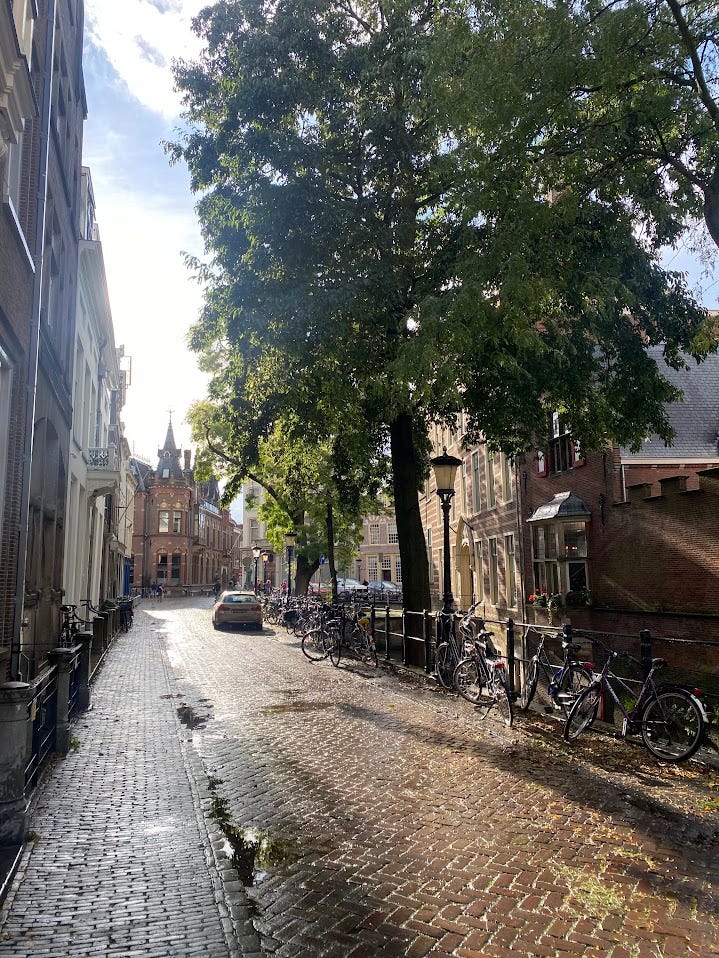
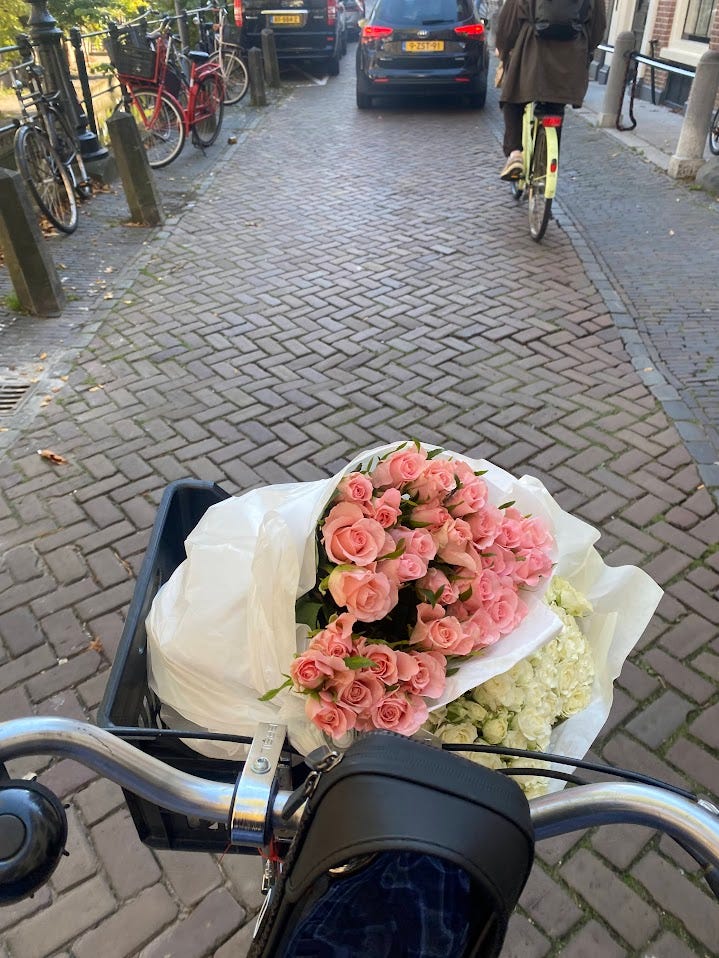
What seasonal experience, like apricity, brings you a moment of calm or wonder?
I have experienced a few of these days over the last few months as I have fully settled into living in the Netherlands, my passage through this experience guided by the changing of the seasons: from a hot summer spent in Italy to a gentle autumn in Utrecht.
When my husband and I go for a wander on the weekend, a ritual we have established that includes getting a coffee (trying a new place every time until we find our favourite) and buying a bunch - or three - of flowers to fill our home, we have often been left in quiet contemplation as autumnal scenes from a movie play out in front of us. The soft crunch of dirt under our feet, the golden haze of winter’s light parting around the olden tree trunks, and the sleepy dance of yellowed leaves as they transition from life to death, falling gently to the ground in front of us.
Coming from New Zealand, where most of our natural environment is filled with ever-green species, to experience a ‘real autumn’ (in the sense of what we have seen in popular culture growing up, which has always been based in the United States or the United Kingdom) feels almost unreal. And everyone around us, as we kick up the mountains of orange leaves that blanket the ground, seems so unaware that what they are seeing is absolute magic.
It’s one of many things we have been able to experience here that would be unimaginable in Aotearoa.

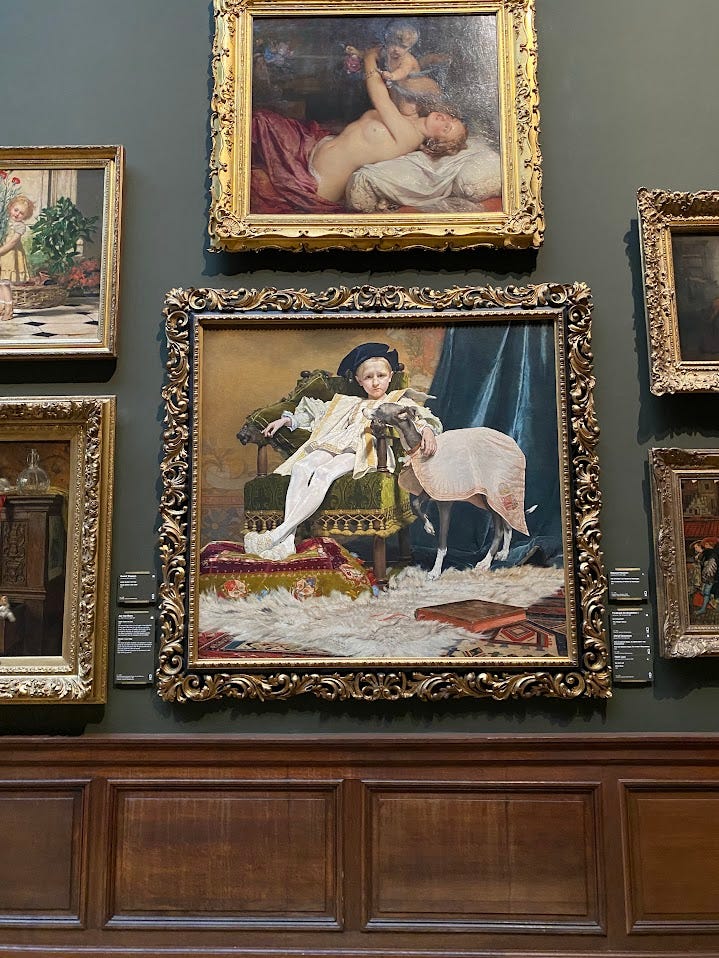
As part of my studies, I have been able to travel all over the Netherlands, as well as to Cologne in Germany, and Antwerp in Belgium. We have visited a new museum basically every week, gaining access to artworks and curation of such diverse philosophies; a kind of access that I would never have had in New Zealand. In being able to simply wake up early, and catch a train to another country, typically for less than 50 Euro, and arrive in a historic, art nouveau inspired train station, or walking outside and to find yourself at the feet of a monumental gothic cathedral- these experiences, with their silent moments of beauty; it is these that I am extremely thankful for.
However, even in the face of these incredible experiences, I have found that, given the workload of university- in particular the time and mental energy spent on reading academic journals and publications- I have let slip an important habit that I had managed to establish last year: Reading for fun. Why is it that as soon as I go back to university, my ability to read fiction dissipates into nothing? Instead of sitting down with a ‘good book’, I find myself mindlessly scrolling TikTok, or lately, playing video games. And even when I do try to get back into reading, nothing grabs me enough to hold me accountable to my own goals.
Do you feel a shift in your reading habits based on your current lifestyle or environment? How do you rekindle your love for reading when it wanes?
When I worked at the public library, this was of course easier. I had access to books all the time; they consumed most of my waking hours. When it was quiet, I was even allowed to read on the job, as long as customer service took precedence. I went from reading maybe one book a year prior to this job, to nearly 70 in the year I worked for the library. After spending the first half of the year traveling, settling into a new country, and beginning my studies, I’ve noticed a significant slowdown in my reading pace. In fact, I read nearly 45 books by the time I arrived in the Netherlands in July, and since then… I’ve managed to finish only 5. Given I was used to reading nearly three books a week at one point, this lack of engagement with a hobby that I truly love has left me a little listless: a kind of apathy that might be best described as a sort of acedia.
Originally used by monks, acedia was thought to be a state where one becomes unable to find purpose or motivation, even in things they care about. A sort of personal, spiritual apathy, I find this has infected my life in particular when it comes to reading: I can’t start anything new, not even ‘easy’ romance that should take me a day to finish. Nothing seems to ‘hit’ quite right anymore. Perhaps it’s just part of studying again, or perhaps I’m negating some other creative outlet that’s holding my subconscious attention (hello the novel I have been ‘writing’ for two years), or perhaps it’s because I no longer have access to physical books like I used to… Whatever it is, I hope I find a way to move through it soon.
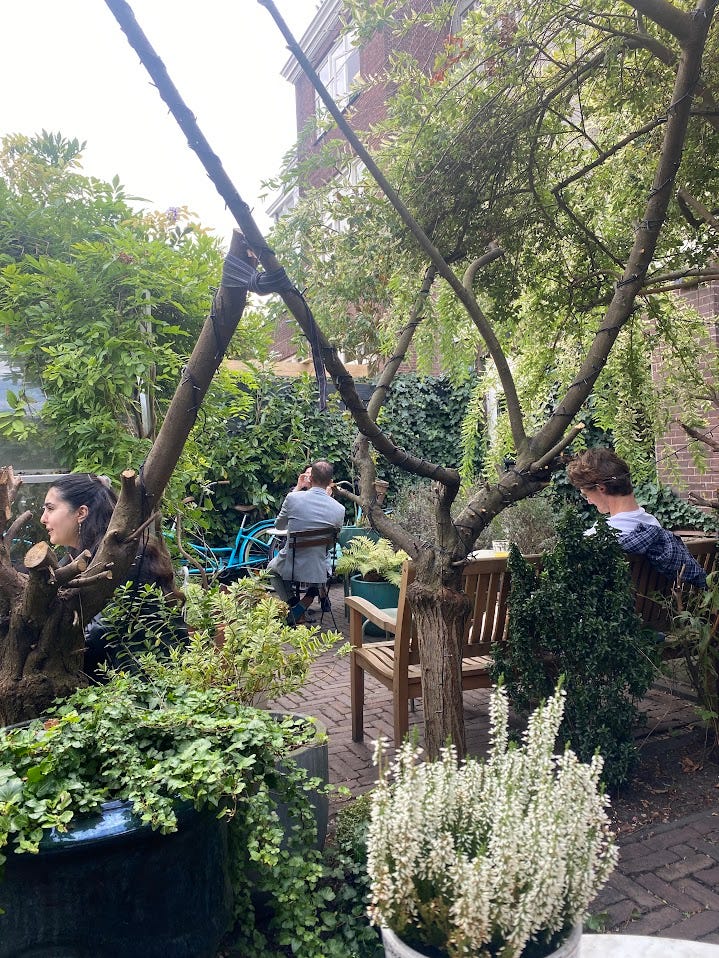
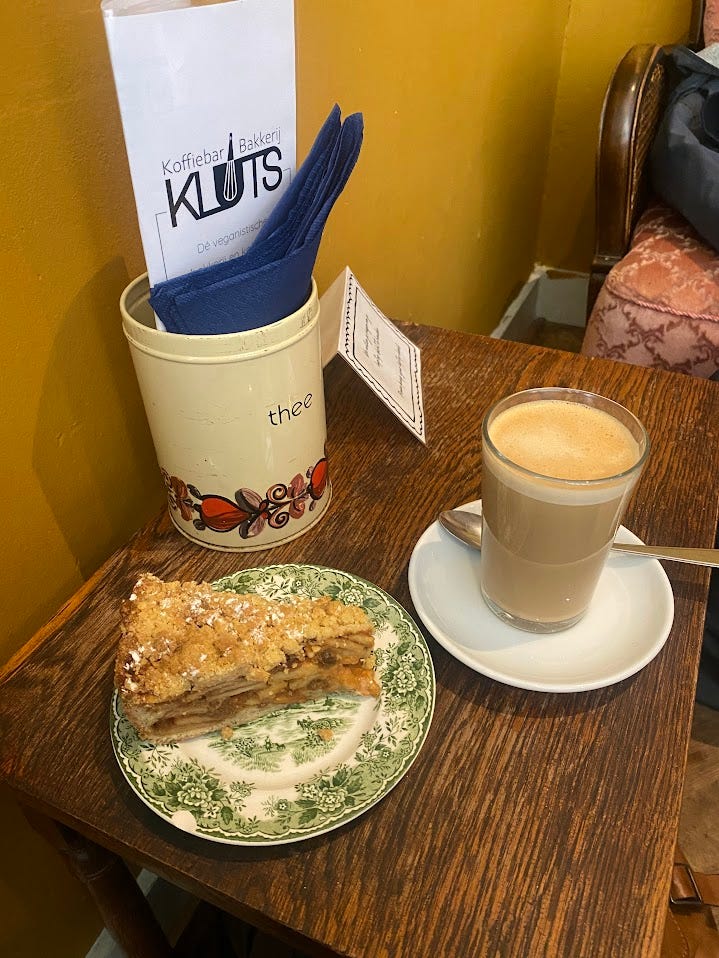
And that of course doesn’t mean I haven’t tried: Every outing I go on I bring one of the several books I am currently reading with me, as well as a small notebook and pen (I’m one of those people who scribbles in the margins- sue me). I think of these outings- enjoying a coffee and a pastry (my current favourite being a kannelbroodje)- as an opportunity to read, or take notes, to accumulate my ideas. But I just can’t. In fact, when I am trying to sum up my thoughts, ideas, and creative threads within my common journal, I’m often drawn back to my phone: but this time, I’m scrolling through my screenshots folder: in many ways, my own digital, visual common journal.
I have heard that this might be something a lot of people with ADHD do: they see something they find interesting, then take a screenshot to ‘remember it later’, then completely forget it ever existed. This, tied with dopamine hunting via buying that fresh notebook that you’ll ‘definitely’ write all your notes and ideas in…
The fact that I remember to check my screenshots album has got to be a win, I think. Even if it’s triggered by the need to save space on my old iPone 11, at least I review the little moments from my days that I felt interesting enough to keep a record of. Perhaps, as we become more and more consumed with our digital lives, instead of judging our use of collecting images or ideas like this, we embrace it? Is the collecting of these experiences, these points of interest not the point anyway? Why does it have to be relocated to a particular book? Is this just a pseudo-intellectual ‘dark academia’ trend, or is there truly something to the process of writing out our ideas and inspirations, pen to paper?
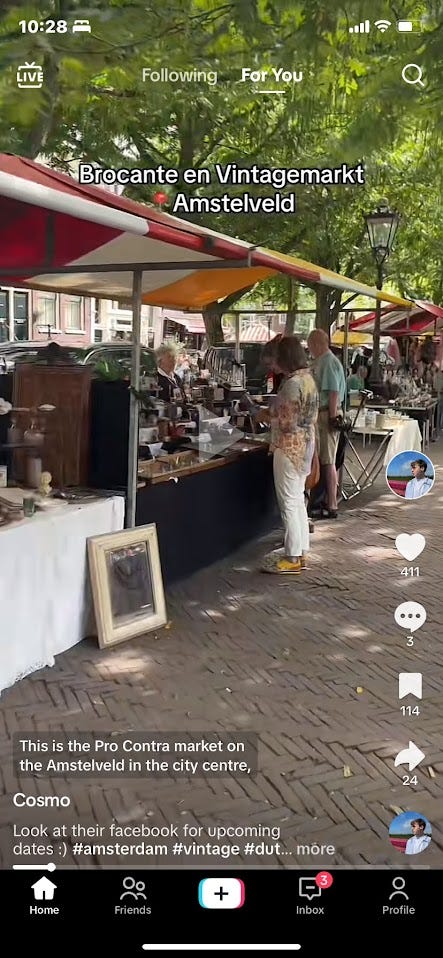


Either way, I enjoy my time people-watching at these local cafe-slash-boutique bakeries. They are always so beautifully designed, with such delicious treats, surrounded by natural, earthy interior design: terracotta tiles, wooden panelling, and plants everywhere. This kind of attention to detail, in particular through our lived environments, is in my opinion extremely important, and it’s something that town planners and architects of a different time took seriously.
There’s something essential and transformative that happens to the psyche when wandering an urban environment where beauty is valued as highly as infrastructure and accessibility. Too often, it seems, governments, councils, and developers overlook the fact that beauty is one of our most fundamental social needs. It’s something very few places in New Zealand really considered, so being surrounded by it here in the Netherlands, I am made acutely aware of how important it can be.
In his Critique of Judgment, Kant described beauty as offering a unique kind of pleasure that is "disinterested"—meaning we appreciate beauty without needing it to serve a practical purpose. Urban beauty serves this role by giving us spaces where we experience pure enjoyment or tranquillity; which can be found in the canal houses of Amsterdam, the draping flowers that fall from the lamp posts of Utrecht, and the autumnal explosion of colours from the ancient oaks that surround the ‘green belt’ of my new home city. This form of aesthetic appreciation is crucial for mental well-being, offering relief from the practical concerns that often dominate city life. Additionally, Simone Weil argued that beauty has a moral component; it demands our attention, teaching us to be present and aware. For Weil, beauty is an invitation to focus and appreciate qualities that are essential to the human spirit (Which is about as far as I agree with Weil’s philosophy surrounding this point, but it remains pertinent to this idea nonetheless). Urban beauty cultivates this form of attention in a bustling world, grounding people in the present and helping them feel connected to their surroundings and each other. When paired with a commitment to cycling and walking infrastructure, European cities like Amsterdam and Copenhagen create a living environment that meets these particular needs. By designing for pedestrians and cyclists, these cities encourage slower, more mindful engagement with the environment, offering a sense of openness and reduced car dependence. It also creates an environment of wandering; perhaps even a re-establishment of the voyeuristic flaneur of the 19th century.
In what ways do you think urban design and the beauty of a city impact mental well-being? Do you feel inspired by particular public spaces?
And this flaneur is particularly partial to the amount of cats and dogs available for pets all throughout my new, beautiful, walkable home city. When I walk, or cycle to these boutique cafes, I often find at least two cats basking in the sun, enjoying their own kind of apricity, eager for a head scratch. And when I do get to my destination, I also find an array of dogs taking up residence amongst the coffee-tables. Little dogs tend to hang out inside, sometimes in their own carriers, enjoying the warm environment, whilst bigger dogs stare at passers-by outside, bobbing their heads, looking for attention. The Netherlands is in fact a very dog-friendly country; Utrecht in particular is filled with dogs, big and small, and often in the arms of someone cycling, or running along with them. I wonder if they too enjoy the beauty of their urban environment, or simply love the fact that they get to walk so easily from their homes to places where dog treats are sold in the same store as pastries.
There is one final word that has informed my last month: Gezelligheid. This is a Dutch word (one of the few that my Mum taught me as a child that actually stuck) that means the warm feeling of cosiness, comfort, and togetherness with loved ones. It’s often associated with winter gatherings or the pleasant ambiance of a warmly lit room. I’ve felt this in a few different environments, both with friends and with family. I’m often sharing in the beauty of our urban environment with new friends I have met in my Masters course; academics from the Netherlands, and further afield- from Italy, to Iran, Hong Kong, Brazil and the United States. Sharing a warm coffee together and talking about our experiences, our interests, and our discoveries as immigrants creates an insightful, and unique sense of comforting togetherness. As I learn more about everyone’s lives, I have come to realise just how important it is to have these intergenerational (being a little bit older than most in my course) but also inter-continental friendships. I have learnt so much from them, and being able to share my own culture has been equally rewarding.
What does ‘cozy’ or ‘gezellig’ mean to you, and where do you find it in your life?
Finally, I’ve come to appreciate the gezellig of building a home with my husband here in Utrecht. We’ve gradually invested the savings we set aside for this move to create a space that feels truly ours, blending our needs with our visual preferences. Rugs, pillows, plants, and warm lighting fill our rooms, creating a cozy backdrop for shared meals, laughter, and moments of joy. As the days grow shorter and colder, we keep the “big light” off, switch on our battery-lit candles, and settle in with hot chocolate and a new TV show, cuddled under a blanket.
To close, I'll say that this past month has been all about finding beauty in the simplest moments and embracing the warmth of togetherness as autumn unfolds. Each day, as we get to know our new home, we’re surrounded by these gentle reminders that comfort and connection are Autumn’s quietest, and most important lessons.






